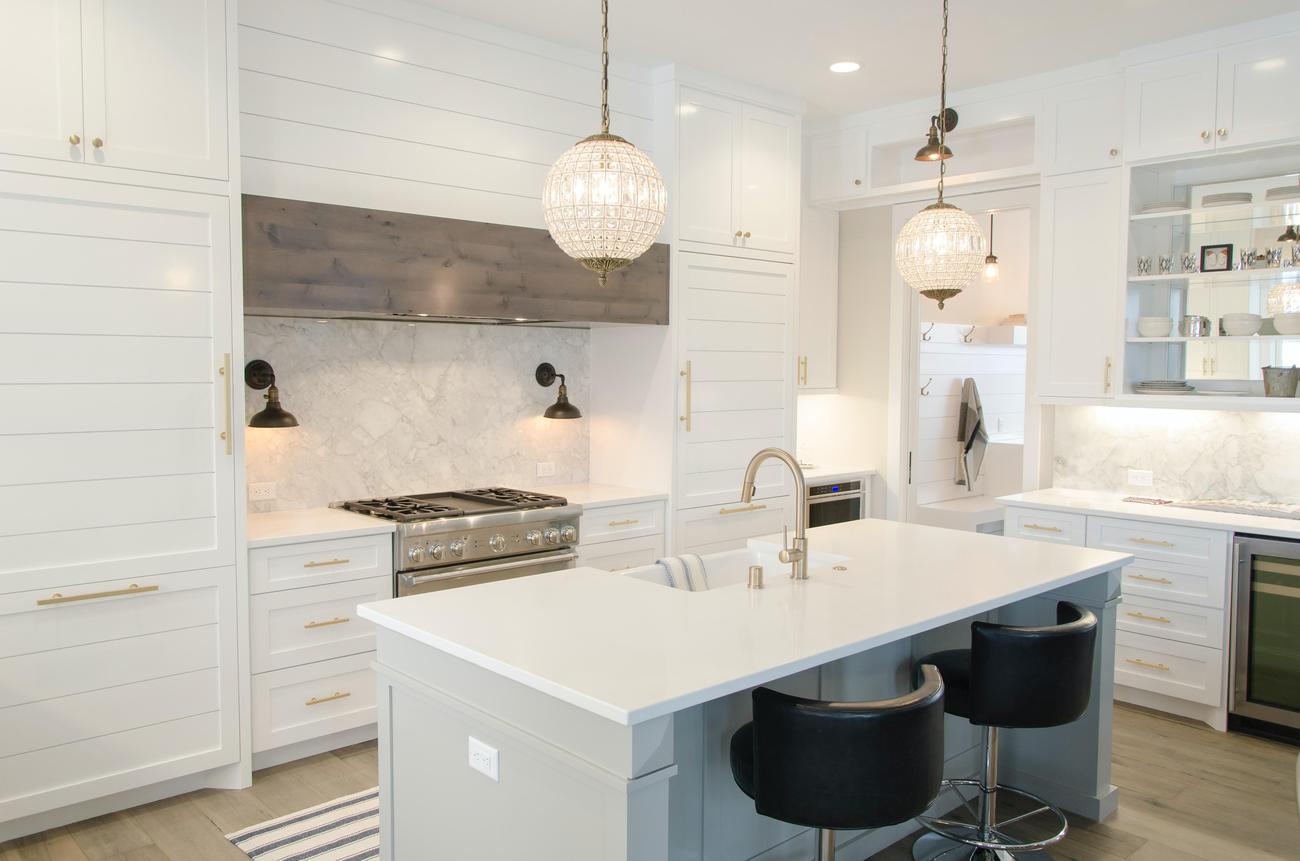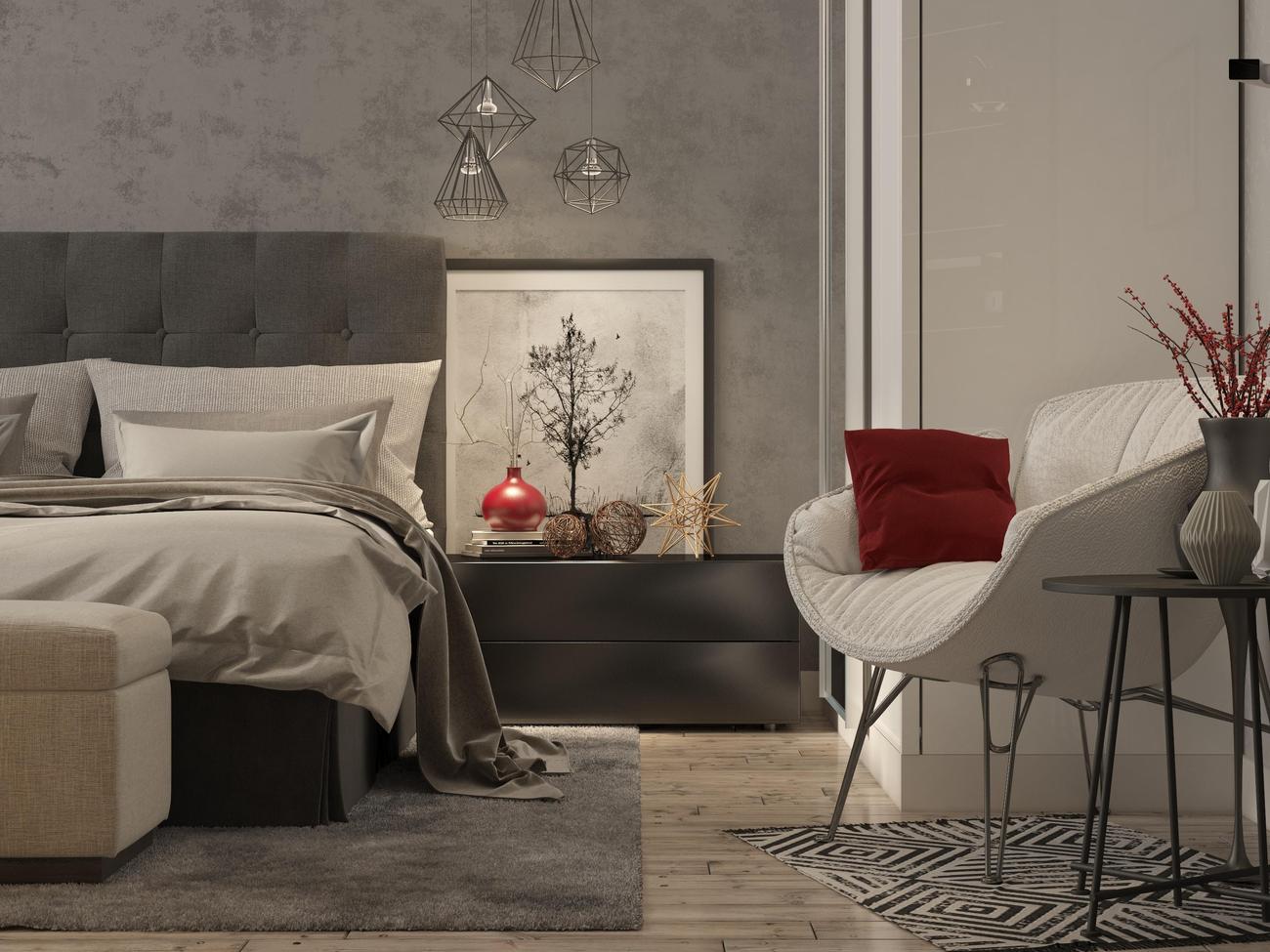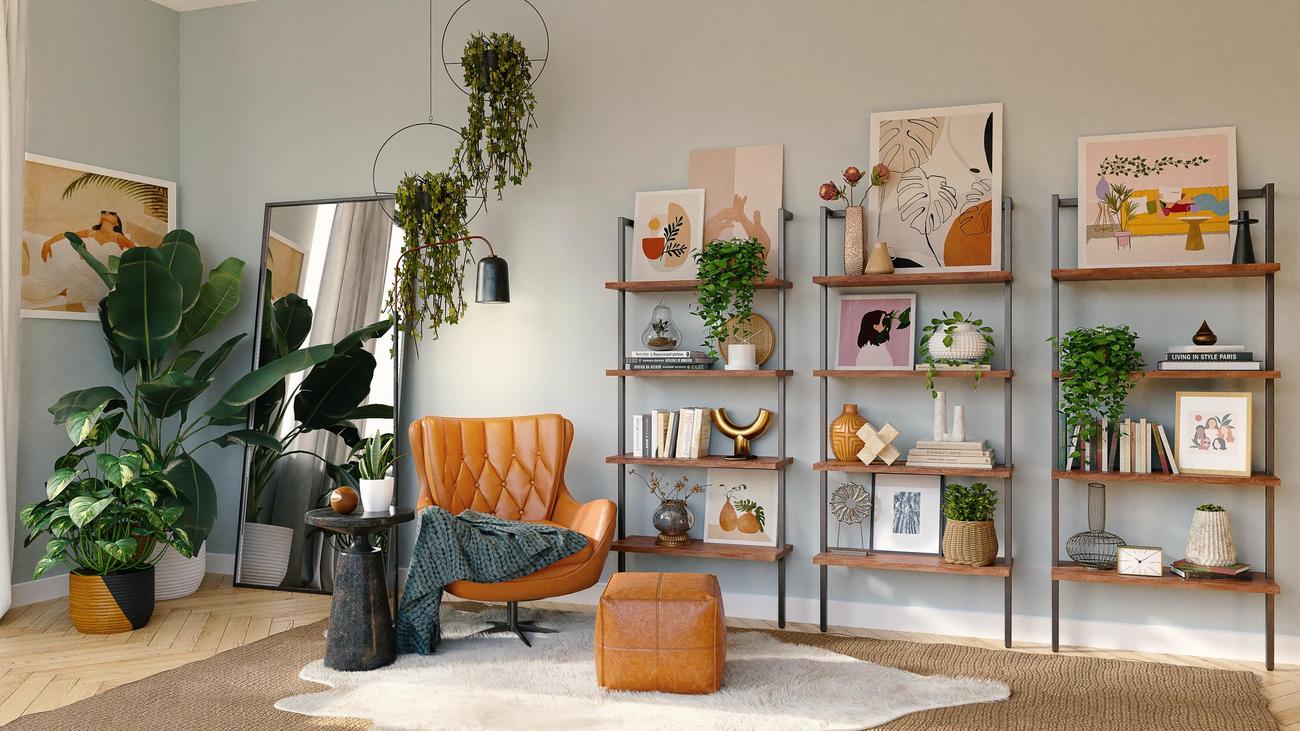Are you ready to delve into the captivating world of interior design? Prepare to discover fascinating facts about this art form that is much older than we think. It may come as a surprise that American actress Elsie De Wolfe, born in 1865 and passed away in 1950, played a crucial role in transforming interior decorating into a profession. As we explore the colorful history and evolution of interior design, join me on a journey of innovation, creativity, and the power of turning a house into a home. From ancient civilizations to modern trends, there is so much to learn and be inspired by. So let’s embark on this exciting exploration and enjoy the wonders of interior design!

Interesting Facts About Interior Design
Interior design is not just about making spaces look beautiful; it’s a fascinating art form that has evolved over centuries, influenced by cultural factors and societal changes. Let’s dive into some interesting facts about interior design that will give you a new perspective on this dynamic field.
Ancient Origins
Interior design is an ancient practice that dates back to ancient Egypt, where intricate murals, ornate furniture, and grandiose architecture were prevalent. The Egyptians believed that their homes were a reflection of their souls, and thus, great effort was put into creating visually captivating and harmonious living spaces.
“From the awe-inspiring temples to the opulent palaces of ancient Egypt, interior design played a significant role in shaping the cultural landscape of that era.”
The Rise of Interior Design as a Profession
While the concept of interior design has existed for centuries, the term “interior designer” is surprisingly less than 100 years old. In the early 20th century, interior design began to gain recognition as a profession separate from architecture. This distinction allowed designers to focus solely on creating functional and aesthetically pleasing interiors.
“The birth of the interior design profession marked a pivotal moment in the history of design, bringing forth a new breed of creatives dedicated to transforming spaces into works of art.”
Leading Ladies of Interior Design
Did you know that nine out of ten individuals in interior design careers are women? Over the years, women have played a significant role in shaping and defining the field. Their attention to detail, creativity, and knack for creating inviting spaces have propelled them to the forefront of interior design.
“Interior design has become a female-dominated profession, where women’s intuition and aesthetic sensibilities reign supreme.”
The Perception of Luxury
Interior design is often associated with luxury and is more prevalent in affluent areas. While this might be true to an extent, it’s important to recognize that good design should be accessible to everyone. Finding beauty and creating functional spaces can be achieved within any budget.
“Interior design is not just for the rich and famous; it’s a tool that can transform any space into a personalized haven, regardless of your budget.”
The Transformative Power of Regulation
Over the years, the field of interior design has become more regulated, ensuring that professionals adhere to ethical standards and maintain a high level of expertise. This shift has not only elevated the industry’s credibility but also provided clients with peace of mind, knowing that their designer has the necessary qualifications and skills.
“Regulation has enabled interior design to become a respected profession, guaranteeing the highest level of expertise and professionalism.”
A Dynamic Field
Interior design is a dynamic field that varies in purpose and style. From residential to commercial design, each project presents unique challenges and opportunities for creativity. Whether it’s transforming a small studio apartment into a functional living space or revamping a corporate office to inspire productivity, interior design offers endless possibilities for innovation.
“No two interior design projects are the same, making it an exciting field where creativity knows no bounds.”
The Value of Design
Interior design goes beyond aesthetics; it has the power to improve our overall well-being and enhance our daily lives. The strategic use of color, lighting, and space planning can create a harmonious and functional environment that positively impacts our mood, productivity, and overall happiness.
“Design is not just about looks; it’s about creating spaces that uplift, inspire, and improve the lives of those who inhabit them.”
As you can see, interior design is a captivating field with a rich history and a promising future. These interesting facts shed light on the diverse aspects of interior design, showcasing its influence on our lives and society as a whole. So the next time you step into a beautifully designed space, remember the fascinating journey that brought it to life.
Interesting Facts About Interior Design:
Did you know that pursuing a major in interior design can open up a world of endless creative possibilities? Whether you’re passionate about creating functional and beautiful spaces or eager to transform people’s lives through design, studying interior design can be the perfect fit for you. If you’ve ever wondered, “What is interior design major?”, click here to find out more about this exciting field and the opportunities it offers: what is interior design major.
If you’ve dreamt of becoming an interior designer but don’t have a degree, don’t fret! There are still plenty of ways to get into this industry and make your mark. Discover the secrets to breaking into interior design without a degree and unleash your creativity. Click here to explore the various paths available to you and start your journey into the world of design: how to get into interior design without a degree.
Are you ready to turn your passion for interior design into a career? Getting started in interior design may seem daunting, but with the right guidance and determination, you can make your dreams a reality. Whether you want to work on residential spaces or dive into commercial projects, the first step is crucial. Click here to learn how to get started in interior design and embark on an exciting and fulfilling design journey: how to get started in interior design.
Interior design is so much more than just color palettes and furniture arrangements. It’s a dynamic field that combines art, psychology, and functionality to create spaces that inspire and enhance our daily lives. So, if you’re curious about the fascinating world of interior design, click on the links above and let the adventure begin! Don’t miss out on the chance to explore and learn more about this captivating profession.
Interior Design Is Much Older Than We Think
When we think of interior design, we often associate it with modern times, but did you know that this incredible art form has ancient roots? From ancient Egypt to civilizations across the globe, interior design has been an essential part of human culture for centuries. Let’s delve into some fascinating facts that will open your eyes to the rich history and transformative power of interior design.
Ancient Egypt: Where It All Began
To truly understand the origins of interior design, we must travel back to ancient Egypt. The Egyptians were not only skilled architects but also pioneering interior designers. They crafted luxurious spaces adorned with intricate hieroglyphics, vibrant murals, and ornate furniture. Their attention to detail and understanding of spatial arrangement laid the foundation for future interior designers.
“The Egyptians were the trendsetters of interior design, creating awe-inspiring spaces that still captivate us today.”
Interior Design: A Cross-Cultural Phenomenon
Interior design is not bound by geography. Throughout history, nearly every civilization has incorporated this art form into their dwellings. From the grand palaces of Europe to the serene zen aesthetics of Japanese interiors, each culture has added its unique touch to the world of interior design.
“Interior design transcends borders, intertwining culture and creativity into beautiful living spaces.”
The Evolution of the Term “Interior Designer”
While interior design has ancient origins, the actual term “interior designer” is relatively new. It was coined in 1904, marking a crucial distinction between architecture and the specialized field of interior design. This breakthrough allowed designers to focus solely on creating captivating and functional interiors, showcasing their expertise in a distinct profession.
“The birth of the term ‘interior designer’ marked a defining moment in the history of this captivating art form.”
Elise de Wolfe: The Trailblazing Visionary
Actress and socialite Elsie de Wolfe played a significant role in shaping the interior design field as we know it today. In the early 20th century, her flair for creating stylish and livable spaces caught the attention of the elite. De Wolfe’s work elevated interior decorating to a recognized profession, inspiring countless designers to follow in her footsteps.
“Elsie de Wolfe’s innovative spirit and extraordinary vision paved the way for interior design to flourish as a respected career.”
Functionality Over Perfection
In the world of interior design, function reigns supreme. A well-designed space should not only be visually pleasing but also practical for everyday life. Instead of striving for perfection, interior designers prioritize functionality, ensuring that every element serves a purpose.
“In interior design, it’s not about achieving perfection; it’s about creating spaces that effortlessly support our daily lives.”
The Power of Color and Natural Elements
Colors possess an incredible ability to transform a room, evoking emotions and setting the mood. Interior designers carefully select color palettes to create harmony and interest within a space. Additionally, incorporating natural elements like plants and maximizing natural light can greatly enhance productivity and well-being.
“Colors and natural elements have the magical ability to breathe life into a space, making it truly come alive.”
Eco-Friendly and Sustainable Design
As our awareness of environmental issues grows, interior designers have embraced the use of eco-friendly and sustainable materials. From renewable woods to recycled textiles, these conscious design choices not only reduce our ecological footprint but also create healthier and more harmonious living environments.
“By incorporating eco-friendly materials, interior designers can make a positive impact on both the planet and our well-being.”
The Devil is in the Details
Interior design is all about the details. Every small element, from door handles to light fixtures, contributes to the overall ambiance of a space. Top designers pay meticulous attention to these finer points, ensuring that no detail is overlooked.
“Attention to detail is the secret ingredient that distinguishes a well-designed space from an ordinary one.”
In conclusion, interior design is a captivating art form with a long and rich history. From ancient Egypt to the modern day, it has evolved and transformed, shaping the way we live and experience our surroundings. So the next time you step into a beautifully designed room, take a moment to appreciate the fascinating journey that interior design has taken to reach this point.
“Interior design is much older than we think, weaving together cultures, creativity, and functionality to create spaces that truly inspire.”
American Actress Elsie De Wolfe (1865 – 1950) Is Credited For Helping Make Interior Decorating A Profession
If you thought that interior design was always a distinct and recognized profession, think again. It was thanks to the trailblazing efforts of American actress Elsie De Wolfe that interior decorating became a recognized and respected field. Born in 1865, Elsie De Wolfe started her career on the stage in New York. However, it was during her time in the theater that she discovered her true passion lay in set design. She wanted to bring the magic of set design into people’s homes, transforming tired and gloomy spaces into vibrant and inviting havens.
Elsie De Wolfe didn’t waste any time. In 1905, at the age of 40, she opened her own interior design business. She quickly gained recognition for her unique and innovative approach to decorating. In fact, she is credited with blazing the trail for interior design as a profession in 1910. Through her work, Elsie demonstrated that interior decoration was not merely a hobby or an afterthought, but a specialized skill that required expertise and artistic flair.
One of Elsie De Wolfe’s most significant projects was the design of the Colony Club in New York City. This club, exclusively for women, posed a unique challenge for Elsie. She had to create a space that not only reflected the elegance and sophistication of the club’s members but also challenged the traditional expectations of what a women’s club should look like. Elsie’s design transformed the interiors of this prestigious club, setting a new standard for luxury and taste.
In her residential projects, Elsie De Wolfe embraced an innovative and anti-Victorian style. She took inspiration from the light and intimate spaces of 18th-century French interiors and infused them with her own creative vision. Through her use of French furniture and accessories, she brought a touch of European elegance to her designs. Elsie’s distinctive style attracted wealthy clients, including prominent figures such as Anne Harriman Vanderbilt, Anne Morgan, the Duke and Duchess of Windsor, and Henry Clay and Adelaide Frick.
Elsie De Wolfe’s impact on the world of interior design extended beyond her work as a designer. In 1913, she authored the influential book “The House in Good Taste.” This book showcased her design philosophy and provided readers with practical tips on creating beautiful and harmonious spaces. It became a definitive guide for aspiring decorators and elevated Elsie’s status as a leading authority in the field.
It is worth noting that Elsie De Wolfe’s journey into interior design was not a random occurrence. Her parents played a role in fostering her love for beautiful spaces when they redecorated their drawing room during her childhood. Their choice of a William Morris design featuring gray palm-leaves and vibrant splashes of red left a lasting impression on Elsie, inspiring her future work.
Elsie De Wolfe’s commitment to transforming interiors and making them more livable and aesthetically pleasing earned her the nickname Lady Mendl after her marriage in 1926. She continued to push boundaries and challenge conventions throughout her career, leaving an indelible mark on the world of interior design.
In conclusion, Elsie De Wolfe’s pioneering efforts helped shape interior decorating into the recognized profession it is today. Through her innovative designs, influential book, and sheer passion for creating beautiful spaces, she laid the foundation for future interior designers to thrive. We owe a debt of gratitude to this remarkable woman, who proved that interior design is not just about aesthetics but about transforming lives and enhancing the way we experience our surroundings. As we continue to explore the fascinating world of interior design, let’s remember the trailblazers like Elsie De Wolfe who helped pave the way for us all.

FAQ
Question 1
What did Elsie de Wolfe contribute to the field of interior design?
Answer 1
Elsie de Wolfe is credited as one of the pioneers who helped make interior decorating a recognized profession. She transformed dark and gloomy interiors into light and intimate spaces, relying on 18th-century French furniture and accessories in her designs. She also authored the influential book “The House in Good Taste” in 1913.
Question 2
What was Elsie de Wolfe’s style of interior design?
Answer 2
Elsie de Wolfe’s style was described as innovative and anti-Victorian. She aimed to bring light and freshness to previously heavy and ornate interiors. Her designs incorporated elements of 18th-century French aesthetics, creating spaces that were elegant and intimate.
Question 3
Who were some of Elsie de Wolfe’s notable clients?
Answer 3
Elsie de Wolfe’s notable clients included prominent individuals such as Anne Harriman Vanderbilt, Anne Morgan, the Duke and Duchess of Windsor, and Henry Clay and Adelaide Frick. Her talent in transforming interiors garnered her a prestigious clientele.
Question 4
When did Elsie de Wolfe start her interior design business?
Answer 4
Elsie de Wolfe started her interior design business in 1905. At the age of 40, after acting on stage in New York, she discovered her true gift was in set design, which she translated into transforming homes.
Question 5
What did Elsie de Wolfe’s parents do to their drawing room when she was a child?
Answer 5
When Elsie de Wolfe was a child, her parents redecorated their drawing room with a William Morris design of gray palm-leaves and splotches of bright red. This early exposure to intentional design likely influenced her future career in interior decorating.
















